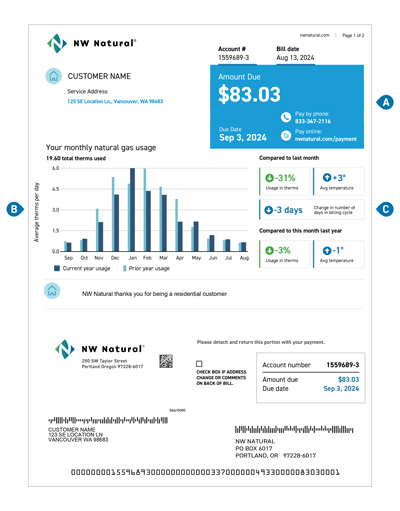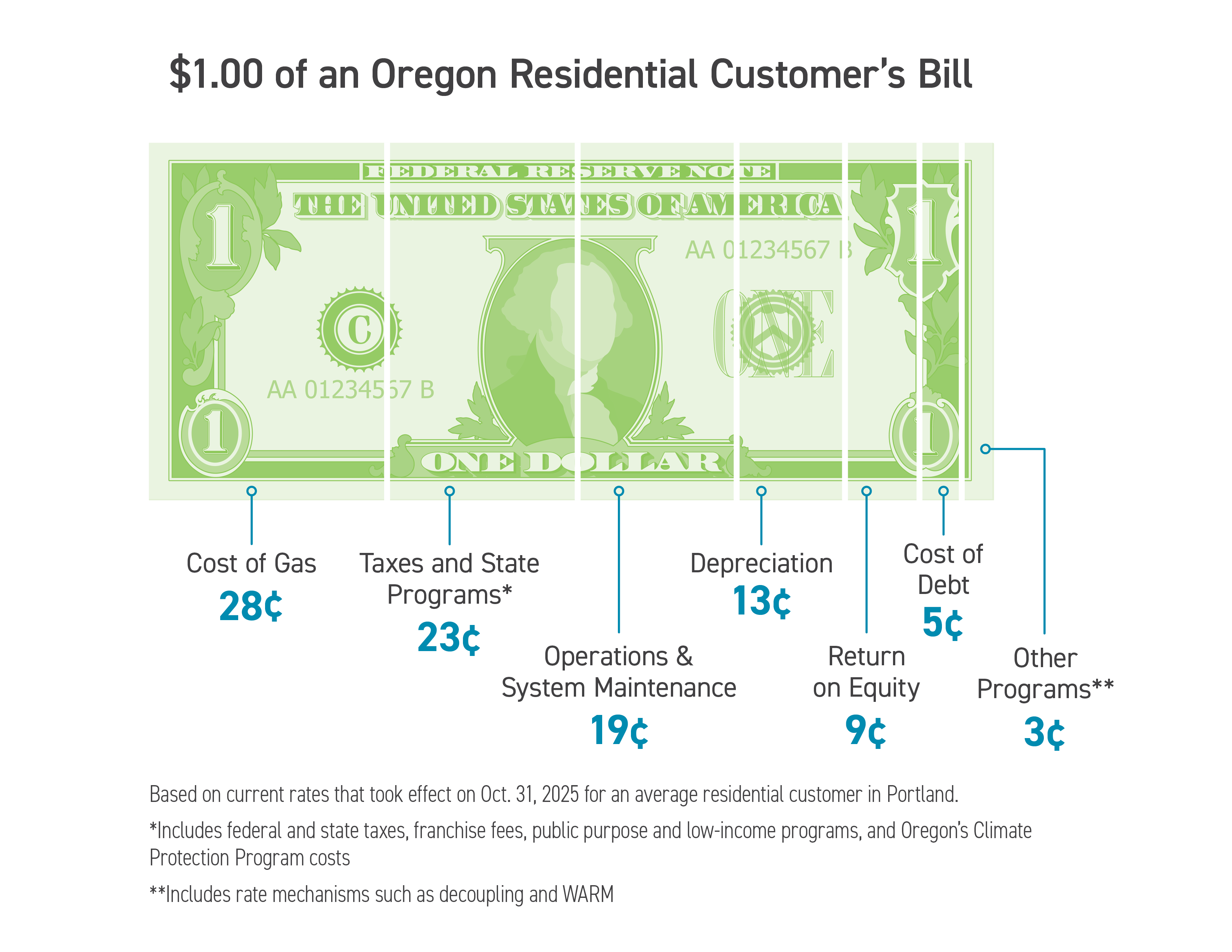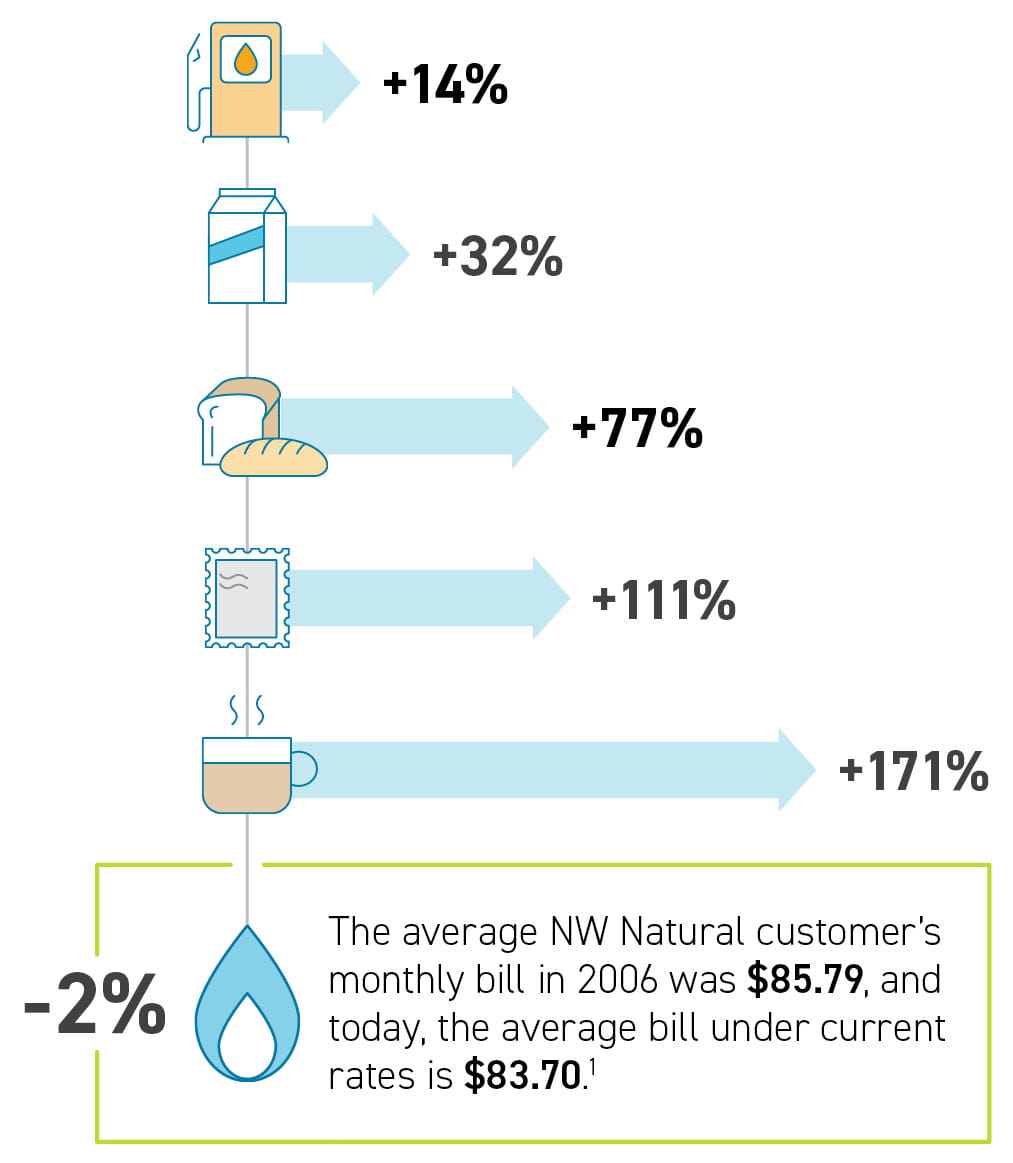Understanding your natural gas bill.
About your NW Natural bill
We recently updated the bill design to make it simpler to read and added new details that answer the most common questions. On the bill, you will see:
- A graph that shows your energy use for the current and previous years, so you know how your energy use is trending over time.
- Information that highlights important differences between bills, such as changes in the number of days in a billing cycle and average temperature.
- At a glance, if you used less or more energy than the month before, letting you gauge the results of your energy-saving efforts.
How to read your natural gas bill
Follow the key below to help understand your natural gas bill each month. If you have questions about how your bill is calculated or what's included on it, please contact customer service at 800-422-4012, 7am to 6pm, Monday through Friday. NW Natural’s customer service team can also assist you in additional languages by interpreter.
A. At a glance, see the amount due, due date, ways to pay and billing-program enrollment
B. The graph shows up to 24 months of gas use history. It also compares current year gas use to the previous year gas use.
C. The different-colored boxes contain information to help you compare the following:
- Compare gas use in therms to the previous month and to this month last year.
- Compare the average outdoor temperature to the previous month and to the same month last year.
- Compare the change in the number of days in a billing cycle to the previous month. More days in a billing cycle could increase the typical bill amount.
The colors and arrows represent:
- Green = good, information that may decrease your bill
- Orange = be aware, information that may increase your bill
- Blue = neutral, general information to know
How your gas bill is calculated
Our rates are regulated and approved by the Public Utility Commission of Oregon (OPUC) and the Washington Utilities and Transportation Commission (WUTC). The current charges on your bill are based on up to five components.
Monthly service or minimum charge
Gas usage cost
Smart Energy program charge
Local taxes
Public purpose charge
Comfort and affordability
Despite periods of extraordinary market conditions, the average NW Natural customer is paying about the same for natural gas bills as they did 20 years ago.[1]The average bill for a NW Natural residential customer in our Oregon/Washington service territory in 2006 was $85.79; that average bill now is $83.70. This is based on the average amount of gas used per customer.
Common billing terms
Billing factor
Late payment charge
Payment due date
Therms
Units of Gas


